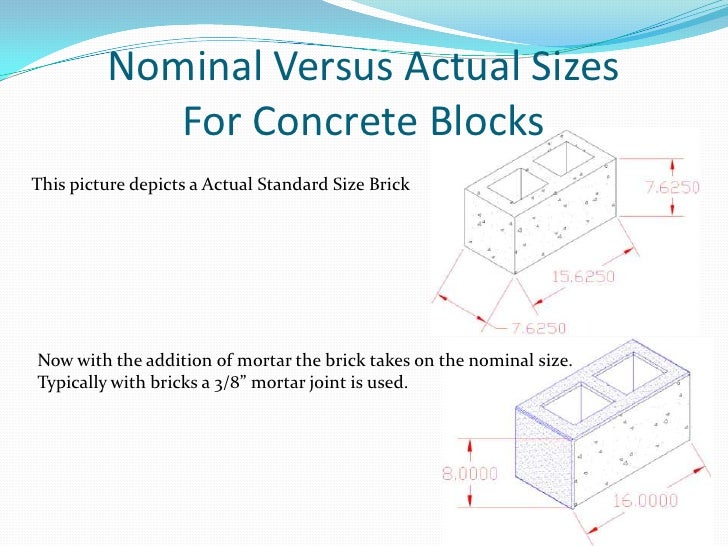

Mine doesn't have it because it needs to be added before any nailer is added to the top of the wall, and in the case of bond beams, before the bond course is laid. These products are reasonably priced and do add insulating value to the block. You might look at cost versus benefit for filling the block cavities with vermiculite or foam beads for insulation. Some companies advertise "insulating paint" for block, but that stuff has been tested multiple times and found to be useless. This seals off the surface of the block to the point where you don't get dust collection such that the block has to be blown off or vacuumed to get rid of accumulated dirt, and it reflects light very well without creating glare. I've sprayed my interior walls with block filler (a cheap, thick primer) and topcoated with semi-gloss white. If you go with block, I agree with taking the block all the way up. If I lived up north, it would be easy to justify adding foam board and acrylic stucco to the exterior, but I can't see it given the projected operating costs of the mini and the average amount of time I spend out there daily. It will reduce the above heating costs by roughly 2/3. I've purchased a 1.5 ton mini-split for installation this spring. This is heating to the point where a short sleeve shirt is comfortable for working.
#3 different weight classes for cmus plus
To put some dollars on this, with power 13 cents/kWh including tax, etc an hour warm up plus 4 hours work time costs me $1.40 to $1.90 depending on outdoor temp. When the temp is lower mid 30's the heater will run approx 1/3 of the time after an hour warm up if the shop is cold soaked. I have a 5kW electric heater I use to heat the shop. Night time lows in the mid 20's are common. I'm in the mountains of western NC at about 2500 ft elevation. The area I use as a shop is about 700 sq ft, walled off from the remainder. Still nothing on the walls, nor in the block cavities. I insulated with R19 batts between the bottom truss chords and added rigid foam and weatherstripping to the pair of 9x7 uninsulated wood garage doors and a rubber sweep at the bottom of the man door. Open trusses up to the roof and no other insulation. The detached has stucco on the block and siding on the gables to match the house. When I bought my house, it came with a thousand sq ft concrete block detached garage as well as an attached double garage. even though you are not in a earthquake or probably any hurricanes either i'd still load up about every 3rd column with rebar vertical and horizontally every couple feet to add some extra support. We've had several 6.5+ earthquakes since we moved in here and honestly never felt any of them and as far as I know not any damage either, but we were not at the center of those. I would continue up to the height of your ceilings at 8, 10 or 12 foot or whatever then put on beams (wood or steel) or trusses and roof it. ( part of the front of our home is a smaller block, but rest is the standard 2 hole you see everywhere) I tacked on 1x4's with cement glue and 1.5 inch joist hanger nails and then put on Hardie Plank 6 inch siding with 4.5 inch reveal so it looks pretty much like a wood home.

I can say I own more than most commercial building companies do of rotohammers, cement bits and such to run wires and cables and plumbing. if i tore off the flat roof (was going to when we moved in 33 years ago and then we had twins so just re roofed it) i'd probably finish the wiring that i've done about 80% of and fill the hollow blocks with cement just because. since several of my interior walls were exterior at one point it's pretty solid. ONE of the owners before me or maybe a few of them added on rooms at some time maybe every year or paycheck or whatever. i believe the insulating properties due to thermal mass with a 8 inch thick block wall will be better than steel or pole/steel wrapped (maybe i am wrong?)Ĭan anyone come up with any negatives to this thought process? cinder blocks are not rising in price the way other building materials are.ģ. since i do alot of fab work, i do not have the worry of welding spatter causing fireĢ. So one of the thoughts i am having is to build from cinder block, up about 8 feet and then build either steel or wood walls above that to a total of 12 foot. i have spent 25+ years in the aerospace machining industry, and many of those years were spent in concrete block buildings, so i have a bit of a nostalgia on the aesthetic. With the astronomical rise of wood and steel prices i am trying to think outside the box. it will mostly be a shop, very rarely will cars get parked in it as it will be roughly 350FT from the house. I am going through the research phase for my garage/shop.


 0 kommentar(er)
0 kommentar(er)
